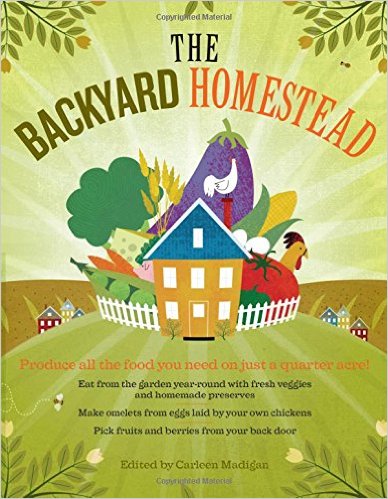 Studying at Chatham and the Eden Hall campus I have learned many different approaches on approaches to incorporate sustainability into our society but also in my personal life. Small-scale home farming operations are an economical way to have access to fresh foods, and practice self-sufficiency. Many of us don’t have access to large amounts of land being so close to a city, but there are highly efficient ways of maintaining a self-sufficient farm whether you have a small backyard or a a few acres of land.
Studying at Chatham and the Eden Hall campus I have learned many different approaches on approaches to incorporate sustainability into our society but also in my personal life. Small-scale home farming operations are an economical way to have access to fresh foods, and practice self-sufficiency. Many of us don’t have access to large amounts of land being so close to a city, but there are highly efficient ways of maintaining a self-sufficient farm whether you have a small backyard or a a few acres of land.
There are many connotations surrounding how much land is really needed to host a small-scale farm but the truth of the matter is that you don’t need much land at all! Rather, one needs a well-designed food production system that works with the earth’s natural systems rather than against them. Food security around the globe could be made more stable if the education was available on how to grow a complete diet in small areas of land.
Whether or not animals are implemented on the farmland is optional depending on the person’s individual and family needs. Its recommended that people host goats, sheep, chickens, or a dairy cow due to the nature of these animals and the space available. Once animals are introduced, grazing management also needs implemented to protect the lands fertility but of course animals add their own feature to the farm. A choice needs to be made whether to never plow the animals land or plow it every four years if you plan to rotate crops. Because grass grows best when it has plenty of time to grow, this is an important factor to consider when adding animals to a homestead.
Crop rotation is recommended so that there are different crops of different ages. The most productive land has been sown two to three years beforehand. These factors all affect the productivity of the land for the edible gardens. Edible gardens will of course need separated from livestock if they are implemented and its recommended that you break your edible garden into about four sections. An example I found that was based off of the book “ The Self-Sufficient Life and How to Live it” by John Seymour stated that an ideal crop rotation would look something like this:
–Grass (four years)
–Plot 1: Potatoes
–Plot 2: Legumes (pea and bean family)
–Plot 3: Brassicas (cabbage family)
–Plot 4:Root Vegetables (carrots, beets, etc.)
Bio intensive farming has blown up in recent years encouraging people to systematically plan their gardens using methods that have been researched. The book “ The Backyard Homestead” by Carleen Madigar has become very popular, reaching the #1 best seller book on amazon for home and gardening. This book uses the tag line that with just one-quarter acre of land you can produce enough food for a family of four.

This book is a great resource for any one looking into starting a plot. Although this mechanism isn’t one that can be done over night, over time a once acre farm can become more productive than a ten-acre farm. Adding composting systems, renewable energy sources, and different garden planning systems are all features that can be looked into through the resources I’ve provided above.
Ultimately, it’s in our best interest as a community to consider implementing some of these techniques in our own lives. Attached below are a few ideas of how you can start your plot with the land you have available to you. If none of these apply, than researching a community garden near you might be in your best interest for fresh foods at a low cost.


Sources:
http://www.smallfootprintfamily.com/how-much-land-is-needed-to-be-self-sufficient
http://themindunleashed.org/2014/04/start-1-acre-self-sustaining-homestead.html